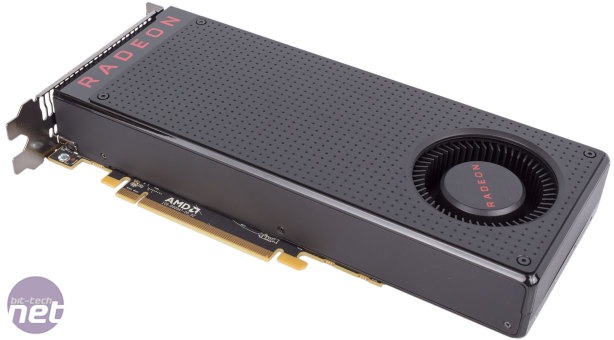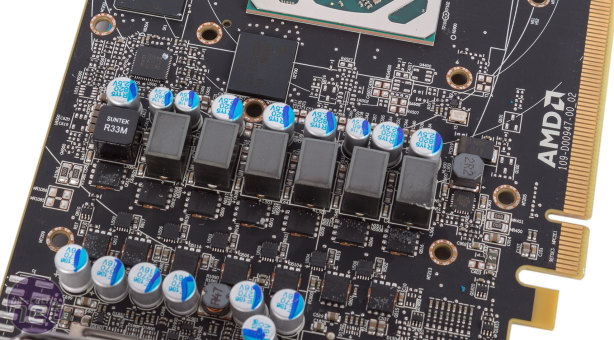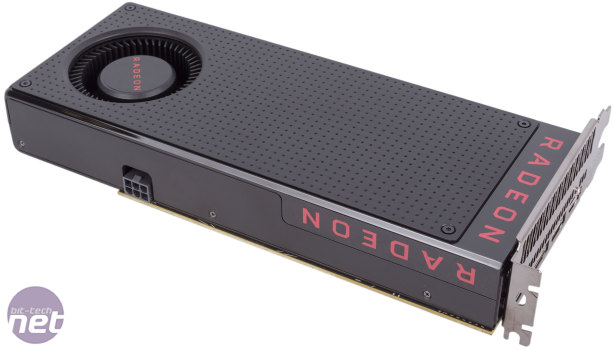
Performance Analysis
Compared to previous cards that have launched at a similar price point, there's a big generational uplift here – the RX 480 8GB is consistently over 40 percent quicker than the R9 380 4GB, while it leaves the GTX 960 2GB, even a heavily overclocked one, completely in its dust. However, the obvious point of comparison for the RX 480 going by current pricing is the GTX 970, and across all of our games AMD's new Polaris part is 16 percent faster when considering average frame rates – that's when compared to the Asus GTX 970 DirectCU II Mini, which is roughly in line with reference speeds.That's definitely not the whole story though, as there's great variance in the differences depending on the game and resolution. The RX 480's lead tends to be bigger at higher resolutions, suggesting it's slightly better equipped to deal with higher bandwidth demands.
The biggest difference, however, is in how the two cards handle DirectX 11 titles versus DirectX 12 ones. The RX 480's lead on the GTX 970 in the former averages out to just 6.5 percent, but it's a much healthier 25 percent for the newer API.
In Ashes of the Singularity, Hitman and Total War: Warhammer (our three DX12 titles), there's a familiar pattern that emerges. At 1080p and 1440p, the RX 480 is able to hit excellent minimum frame rates that are within a close striking distance of the R9 390X and provide a smooth experience, although the latter has higher averages and tends to pull away a little at 4K, where the RX 480 is unable to remain playable. Hitman is where the card is most able to flex its muscles relative to the GTX 970, trumping its minimum frame rate by 12fps at both 1080p and 1440p and as a result remaining playable at the higher resolution where Nvidia's card cannot.
Looking at the DirectX 11 titles, however, tells a different story. In Fallout 4, it's the GTX 970 that has the upper hand, albeit only a very slight one. The RX 480 is able to pull ahead again in The Division at 1080p, but at 1440p it cannot obtain consistently playable frame rates (neither can the GTX 970) and this is also true in Fallout 4 where the 29fps minimum is just shy of the 30fps target. That said, in The Witcher 3, where we use the 'High' preset rather than the 'Ultra' one that we use in the other two games, the RX 480 has no trouble pumping out silky smooth >60fps visuals at 1080p and a strong minimum of 46fps at 1440p, and it again trounces the Nvidia part. What these results tell us is that while the RX 480 is indeed a very capable 1440p card, it will be a noticeably better experience if you turn down the image quality settings just a little.
The GTX 970 was lauded for its excellent efficiency when it launched close to two years ago, so seeing the RX 480 outperform it, sometimes considerably so, while consuming only as much power, is great news for AMD – the system power consumption of 300W we measured is great for a card this powerful. Yes, it's a shame it's taken AMD this long and a die shrink to do this, and the Pascal cards are undoubtedly yet more efficient, but reigning in the RX 480's power consumption is still a good thing, and for those DX12 titles where it does best the performance per watt of Polaris is definitely nothing to sniff at.
Sadly, the reference cooler leaves a lot to be desired. The default 2,200 RPM fan speed limit is quickly reached under load in order to keep the card at its default target temperature of 80°C, and the card is relatively loud at this speed – it's certainly nowhere near as bad as the R9 290X and R9 290 cards were, but compared to what we're used to these days it does still stand out. We found clock speeds were not able to remain at the peak boost speed of 1,266MHz, instead typically floating at closer to 1,200MHz. That said, this appears to be at least as much of a power limitation than a thermal one, as upping the power limit saw 1,266MHz maintained virtually all the time.
As a reminder, we added 9 percent to the core and 12.5 percent to the memory speeds when overclocking. With these new frequencies, we were able to achieve performance increases of between 8 and 16 percent – this is possible because we removed the power and thermal limitations, allowing the card to boost higher more often. Again, this isn't a realistic overclock for everyday use, at least not with this cooler, but it is promising that there appears to be a healthy amount of headroom here.

MSI MPG Velox 100R Chassis Review
October 14 2021 | 15:04











Want to comment? Please log in.